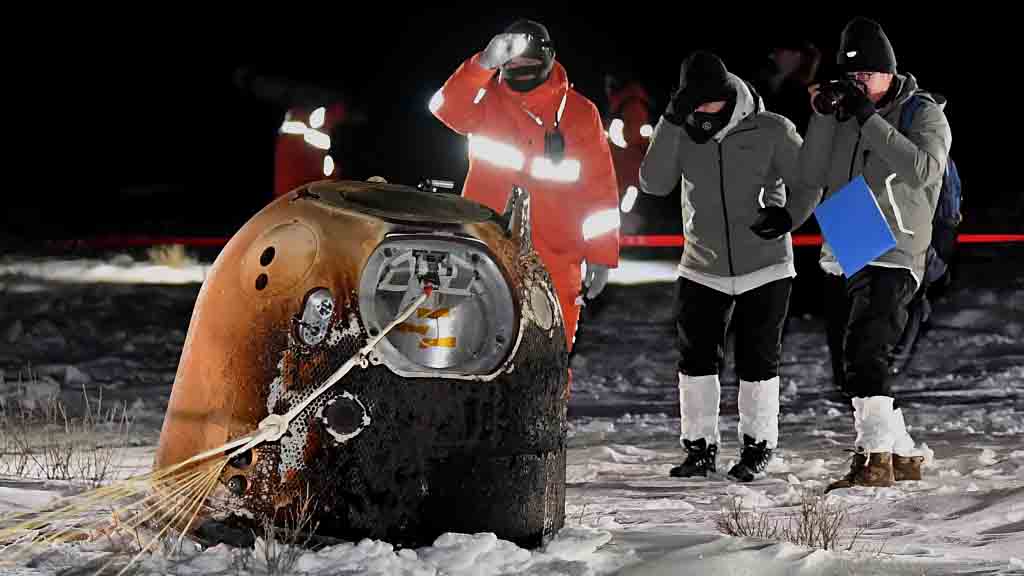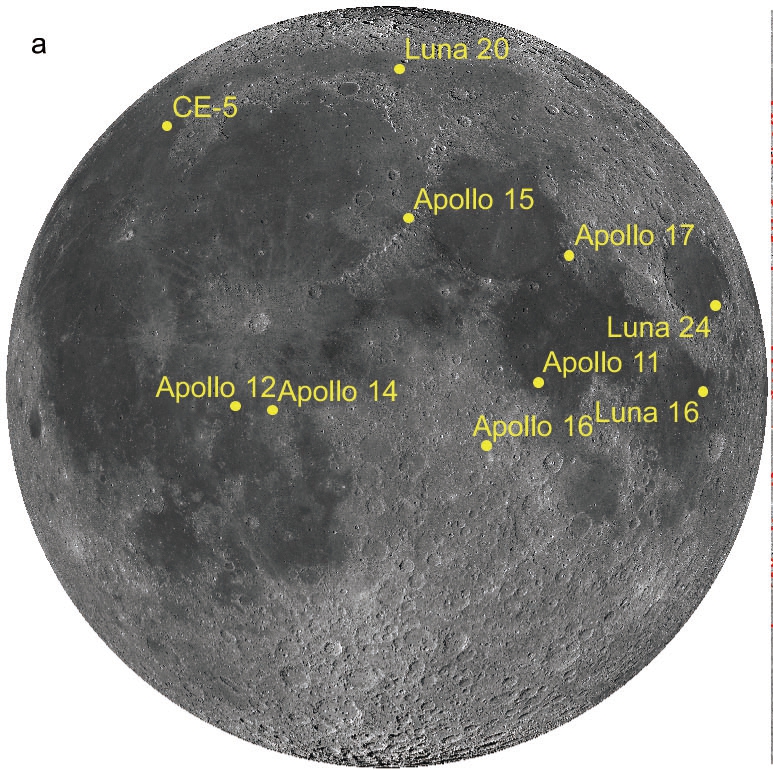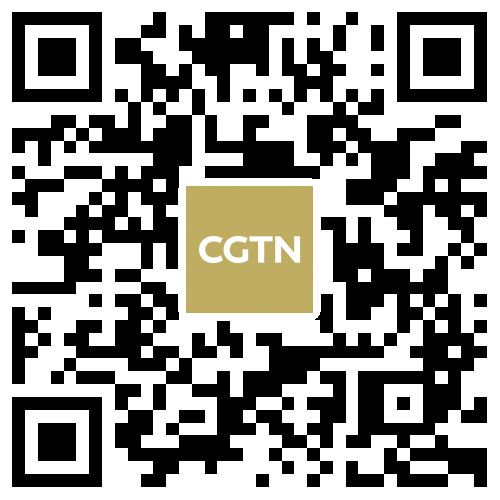
Screenshot of the study from the website of Nature Astronomy.
Screenshot of the study from the website of Nature Astronomy.
Using the lunar samples collected and returned by China's Chang'e-5 mission in December 2020, Chinese researchers say they have established an updated lunar chronology model, which will provide a more precise time ruler for studying the evolution of not just the moon, but also other planetary bodies in the inner solar system.
Their study, published in Nature Astronomy on Monday, provided the latest scientific achievement from the Chang'e-5 lunar samples – the first fresh specimens retrieved from the moon since 1976.
The research was jointly conducted by the Aerospace Information Research Institute (AIR), the Institute of Geochemistry and the National Astronomical Observatories of the Chinese Academy of Sciences (CAS).

A capsule containing moon rocks collected by China's Chang'e-5 mission landed back on Earth on December 22, 2020. /CFP
A capsule containing moon rocks collected by China's Chang'e-5 mission landed back on Earth on December 22, 2020. /CFP
In lunar and planetary studies, it is essential to determine the age of important geologic units and events.
In order to do that, scientists established lunar chronology models by associating the radiometric ages of lunar samples with the method of crater counting of the sites where the samples were collected.
Existing models of lunar impact chronology are primarily based on the samples taken by NASA's Apollo missions and the Luna missions of the former Soviet Union from the moon's equatorial, northeastern and northern regions between 1969 and 1976.
The ages of those samples were radiometrically measured as older than 3 billion years old and younger than 1 billion years old.

Sampling areas of different lunar missions. /AIR of CAS
Sampling areas of different lunar missions. /AIR of CAS
Therefore, before the Chang'e-5 mission, there had been a gap in lunar samples dating from about 1 billion to 3 billion years ago, which is almost half the moon's geologic history.
That means the lunar chronology models based on Apollo and Luna samples were not accurate enough.
Fortunately, China's Chang'e-5 returned lunar samples that fill in that gap – they were radiometrically measured at about 2 billion years old.
Based on the radiometric age of the lunar samples and a detailed statistical analysis of the craters around Chang'e-5's landing area using high-resolution remote-sensing images, the Chinese team established the updated lunar chronology model.

The mapped craters at Chang'e-5's landing area on the moon surface. /AIR of CAS
The mapped craters at Chang'e-5's landing area on the moon surface. /AIR of CAS
The updated model is more accurate than the widely adopted Neukum model (1983), the research team said.
And since the impact chronology of the moon has been extrapolated to other planetary bodies in the solar system, "these results have important implications for the chronology and impact history of the inner solar system," the authors wrote.
(Please contact us at techteam@cgtn.com if you have any feedback.)

